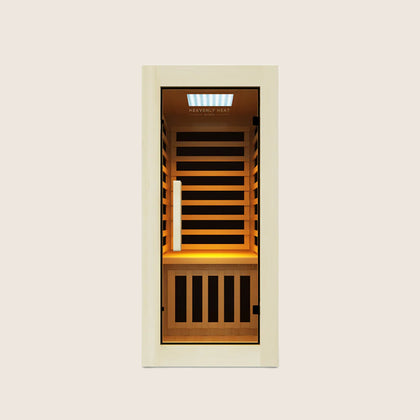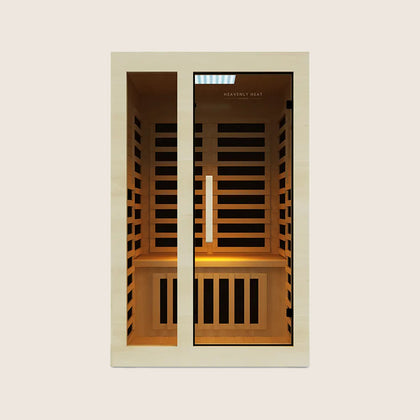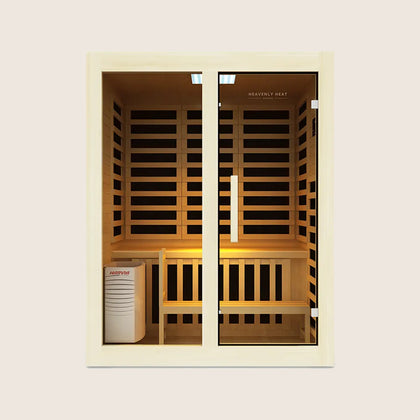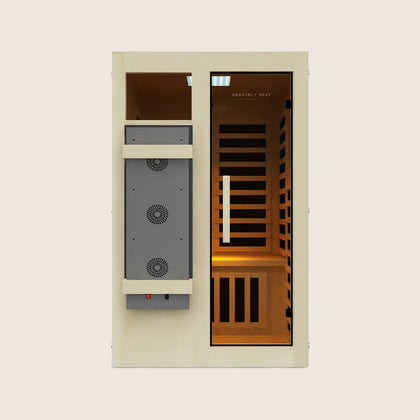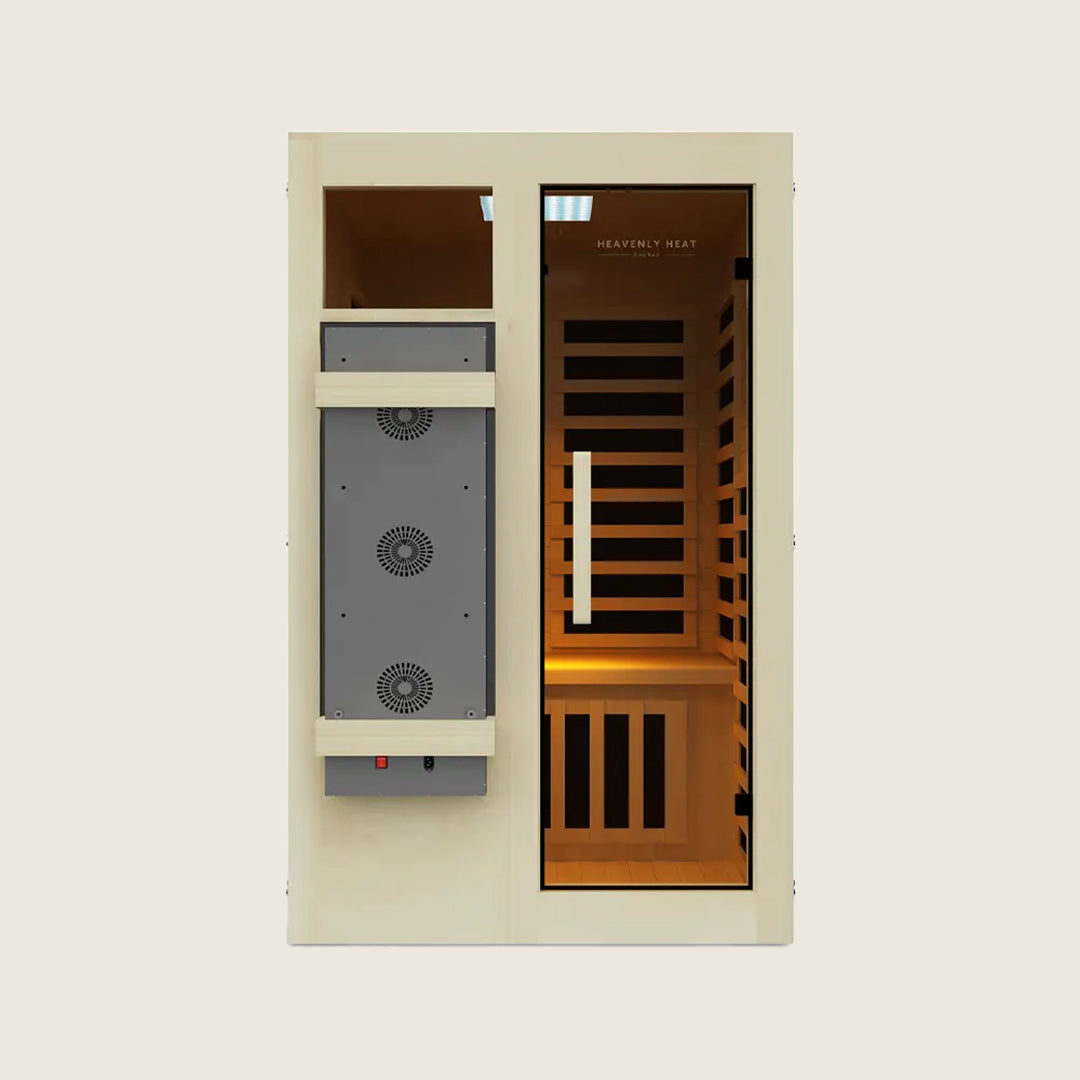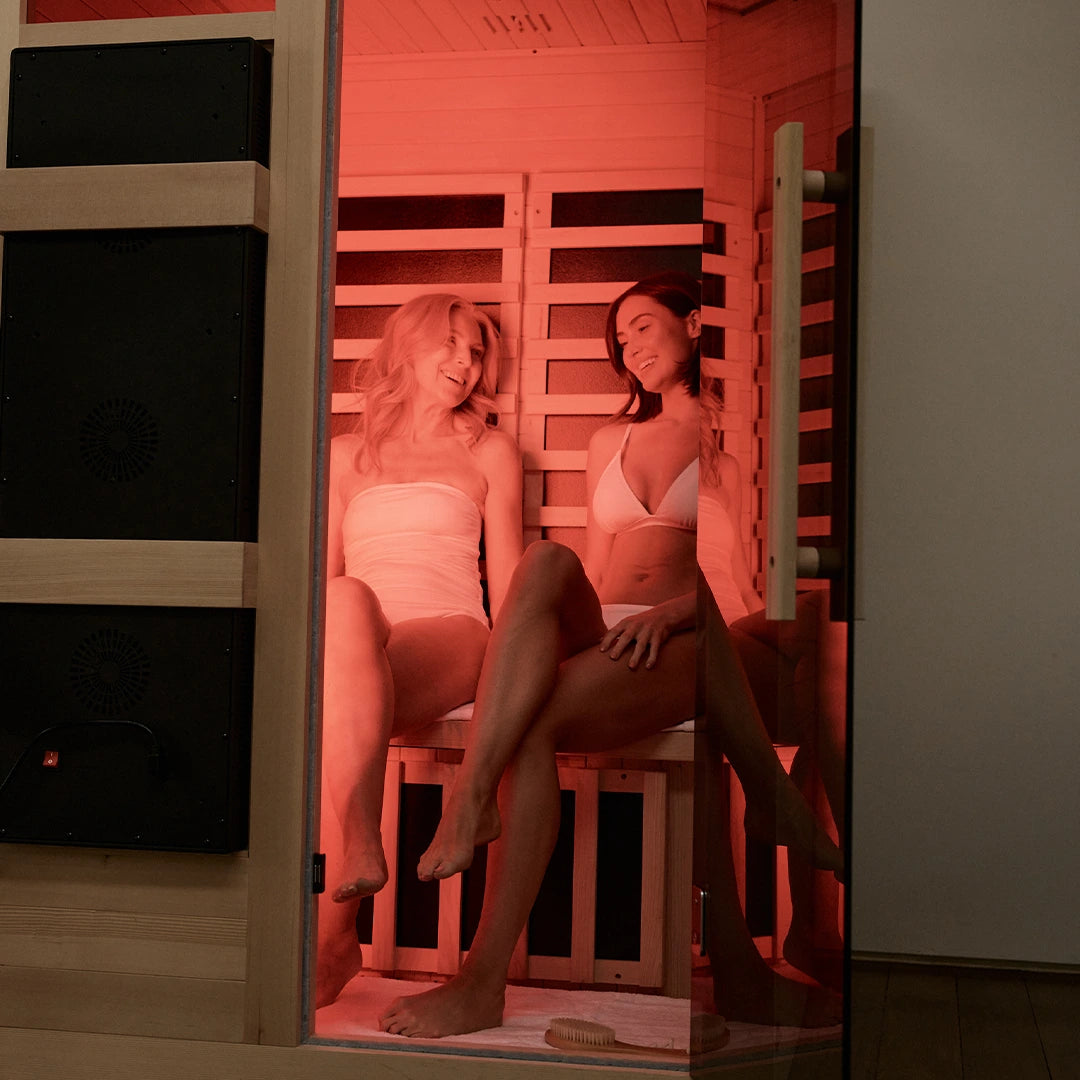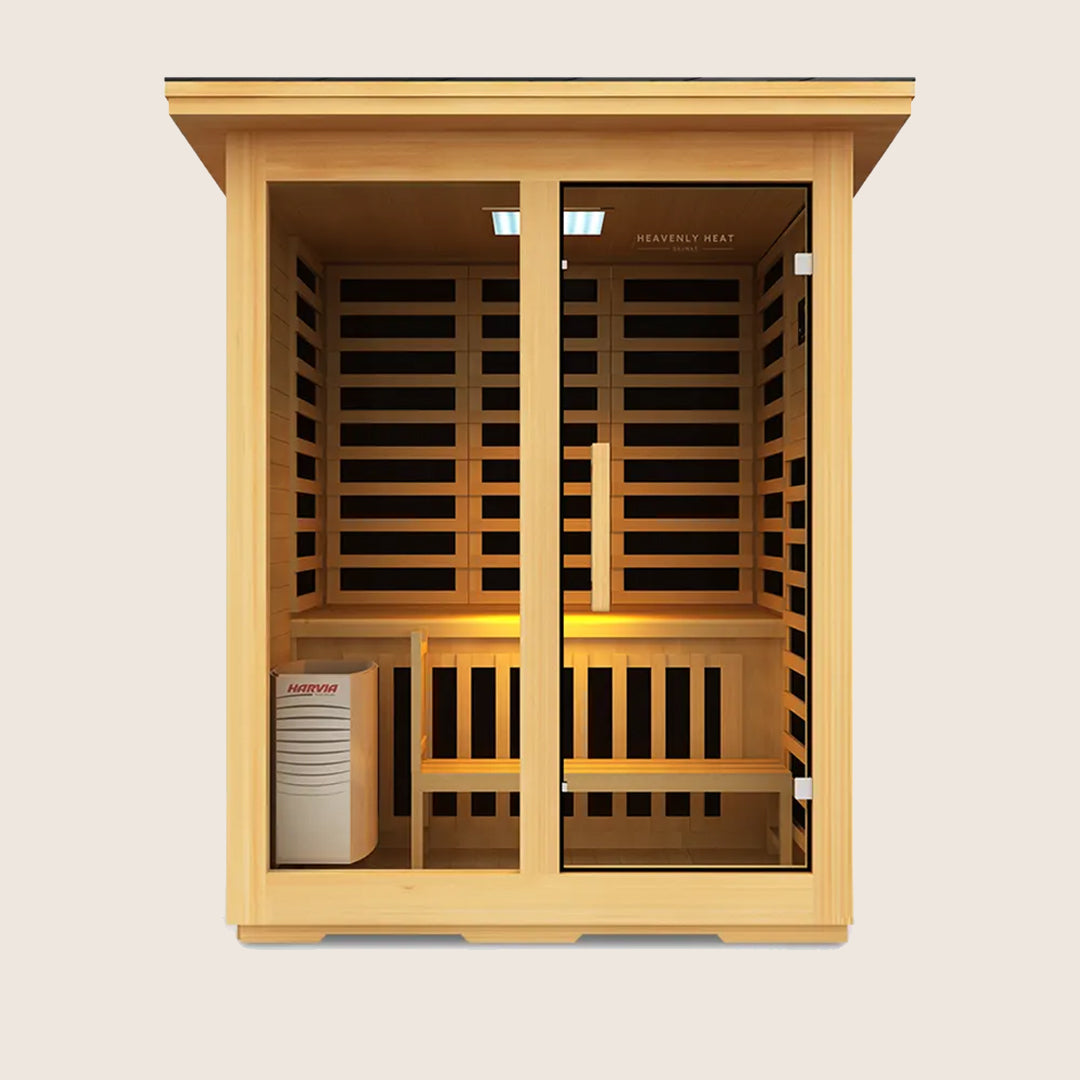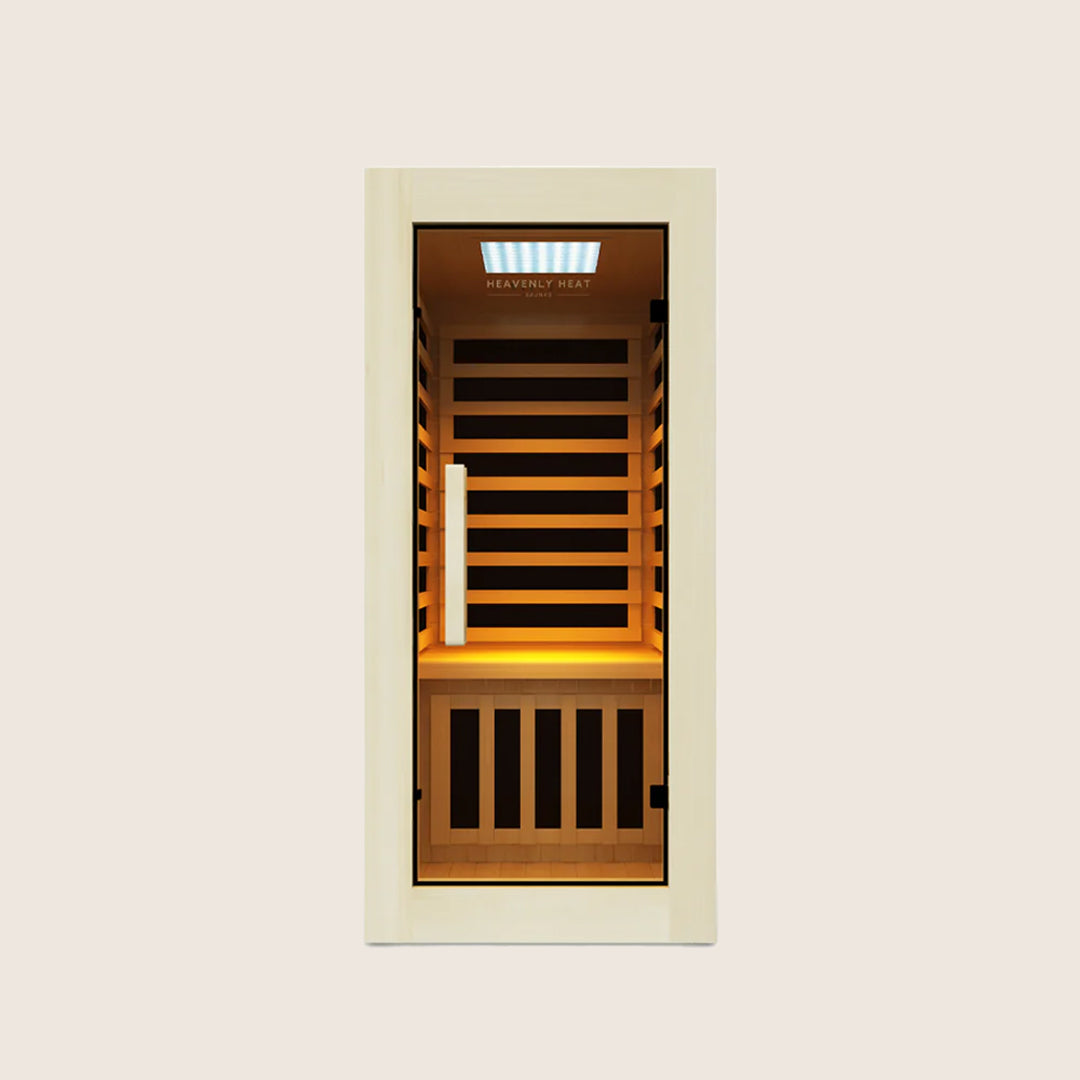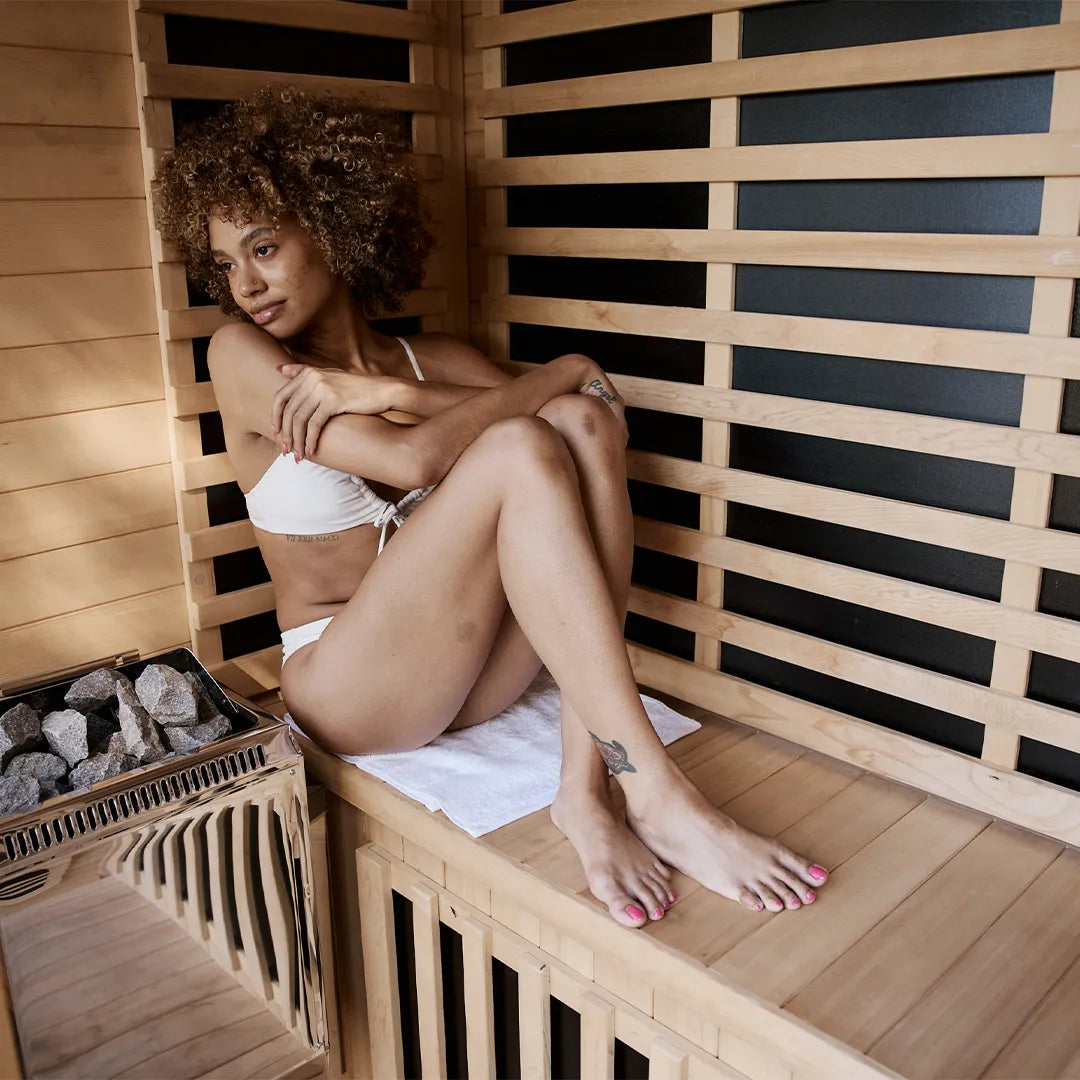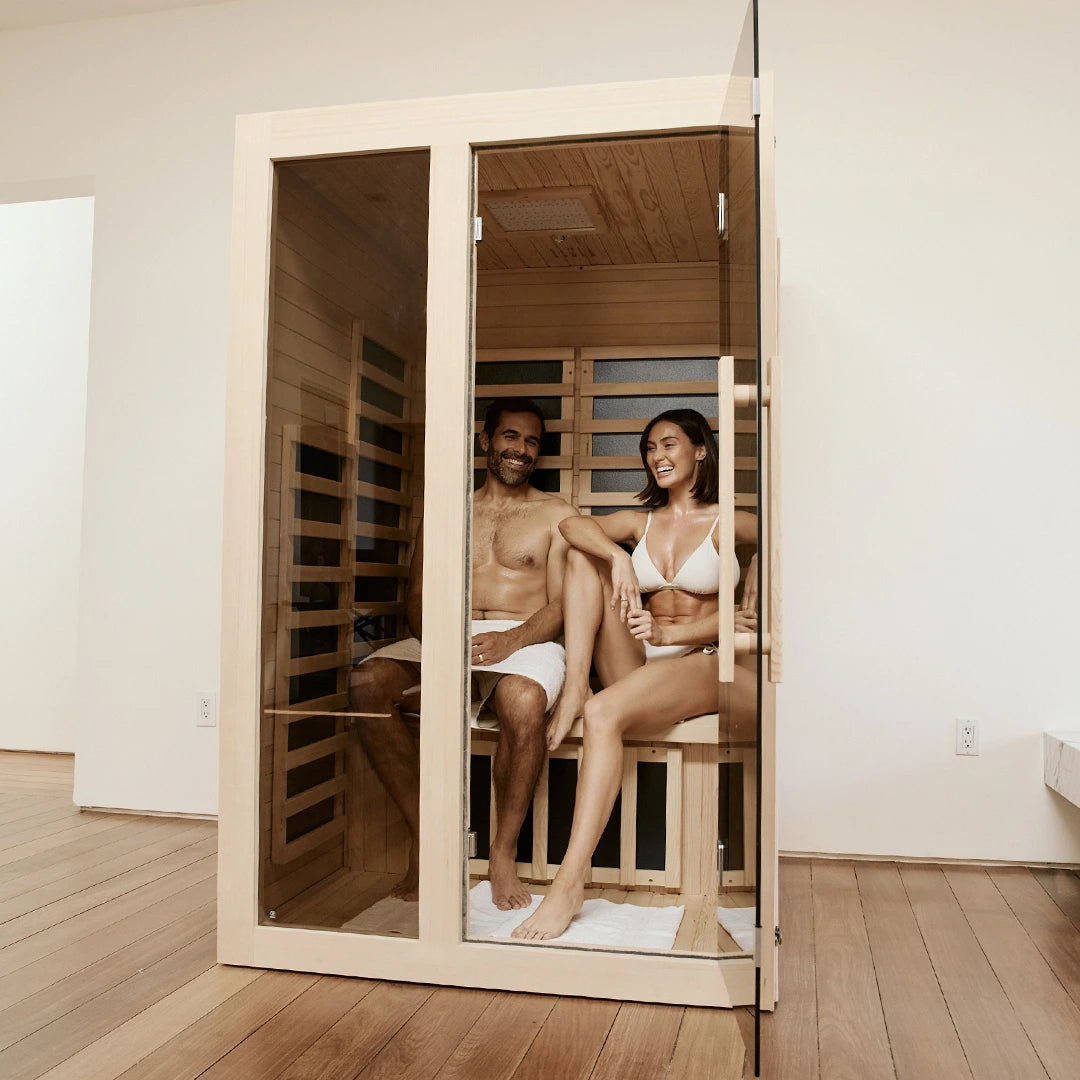Understanding Steam Saunas: Benefits, Installation, and Comparisons with Infrared and Traditional Saunas

Sweating, relaxation, and health benefits all come together in a steam sauna. But is it the right choice for you?
If you love deep, penetrating heat but find dry saunas too intense, a steam sauna might be the perfect fit.
With high humidity, it enhances detoxification, improves circulation, and soothes sore muscles.
Keep reading to discover its benefits, how to install one, and how it compares to other saunas.
Key Takeaways
-
A steam sauna surrounds you with warm, moisture-rich air, creating a deeply relaxing and sweat-inducing experience.
-
High humidity levels make steam saunas feel hotter than dry saunas, enhancing detoxification and respiratory benefits.
-
Regular use improves circulation, muscle recovery, skin hydration, and immune function.
-
Safety precautions like staying hydrated and limiting session time help prevent overheating and dizziness.
-
Choosing the right steam sauna involves selecting durable materials, proper ventilation, and essential features for a comfortable experience.
What Is a Steam Sauna?
- You sit in warm steam that covers your whole body: A steam sauna fills the space with hot, wet air using a steam generator. This surrounds your body with warmth and moisture, helping you feel calm and relaxed.
- The air is full of moisture, not dry heat: Unlike dry saunas that use hot stones or panels, steam saunas create thick, humid air. This kind of heat feels softer and helps you relax in a deeper way.
- The wooden walls let your skin breathe a little: Steam saunas are usually made of wood, which allows some air to flow. This makes them feel slightly more open than steam rooms, which are sealed with tile or glass.
- Your body sweats and your skin feels fresh: The humid air helps open your pores and makes you sweat. This is great for relaxing your body, clearing out toxins, and leaving your skin feeling clean and refreshed.
How Does a Steam Sauna Work?
- The sauna heats up the room with warm, wet air: A steam sauna works by filling a closed room with moist heat, which makes the space feel warm and heavy with humidity.
- Steam is made by heating water until it turns into mist: Inside the sauna, a steam generator boils water and releases steam to fill the space with damp heat.
- The humid air makes the room feel hotter than it is: Even though the temperature stays around 110°F to 120°F, the high humidity makes your body feel more heat than usual.
- Air movement stops the room from getting too wet: Ventilation is used to keep the air moving and prevent too much moisture from building up inside the sauna.
- Steam spreads out evenly for a better sauna session: The steam comes out through vents or nozzles, so it spreads around the room evenly and gives a smooth, relaxing experience.
How Hot and Humid Does a Steam Sauna Get?
- Steam saunas feel hotter than they actually are: A steam sauna usually runs between 110°F and 120°F (43°C to 49°C). Even though this isn't extremely high, the humid air makes the heat feel much more intense than it really is.
- Humidity in steam saunas hits almost 100%: The air inside a steam sauna is full of moisture, close to 100% humidity. This heavy steam stops your sweat from drying, so your body heats up much faster.
- Your body heats up quickly because sweat can’t cool you down: Since the air is so moist, sweat doesn't evaporate like it does in a dry sauna. That means your body holds onto more heat, and you start to feel the effects faster.
- Most people feel most comfortable around 115°F: While the heat can go higher or lower, many people find that 115°F (46°C) is the best mix of comfort and health benefits inside a steam sauna.
- Fresh steam keeps changing the air slightly: The humidity level isn't always exact, when new steam enters, it can raise or shift the moisture a bit, changing how the air feels from moment to moment.
- Steam gives a deeper kind of warmth than dry heat: Dry saunas might feel easier to handle, but the moist heat in a steam sauna sinks deeper into your muscles. This makes the warmth feel more intense and deeply relaxing.
Steam Sauna vs. Other Saunas
- Steam saunas fill the air with thick, moist heat: Steam saunas are different because they create a very humid environment, unlike dry saunas that use heated stones with very little moisture.
- Steam helps you breathe easier than other saunas: The warm, wet air in steam saunas makes it easier to breathe and is better for your lungs than the dry air or light-based heat in infrared saunas.
- Humid heat in steam saunas feels hotter on the body: Even though dry saunas can reach higher temperatures, the moisture in steam makes your body feel the heat more strongly.
- Steam saunas are great for sweating and relaxing your body: If your goal is to sweat deeply, relax fully, and clear your airways, steam saunas give you a powerful experience that stands out from the rest.
How to Use a Steam Sauna Safely
Detoxification Through Sweating
- Sweating helps the body remove harmful stuff: Sweating is one of the natural ways the body gets rid of toxins like heavy metals and chemicals that build up over time.
- Steam makes you sweat more and clean deeper: A steam sauna pushes your body to sweat more than usual, and the moist heat goes deeper into your skin, helping release toxins better than dry heat.
- Your body gives signs when detox is happening: When your body starts getting rid of toxins, you may notice things like more sweating, feeling a little tired, or your skin looking clearer.
- Science agrees that sweating removes toxins: Research shows that people with more toxic metals in their bodies also had more of those same toxins in their sweat, proving that sweating works.
- Sweat can clean the body as much as urine: In some cases, the amount of toxins that came out through sweat was the same or even more than what left the body through urine.
- Using steam sauna is a simple way to help your body clean itself: Sitting in a steam sauna isn’t just relaxing, it actually helps your body clean out bad stuff naturally while you sit back and sweat it out.
Muscle Recovery and Pain Relief
- Steam heat makes blood flow better, which helps muscles heal: When you sit in a steam sauna, the heat boosts your blood flow. This helps carry more oxygen and nutrients to your muscles, speeding up their recovery after a workout.
- Warm steam relaxes sore muscles and makes your body feel looser: The moist heat in a steam sauna goes deep into your muscles, easing soreness. It also helps your body feel less stiff, which is great if you're trying to stay flexible after exercise.
- People with joint pain feel better because steam heat goes deeper: Steam saunas don’t just help muscles, they also ease joint pain. The moist heat reaches deeper into your body than dry heat, bringing more comfort and lasting pain relief.
- Heat works well for both athletes and everyday people: A recent study showed that both trained athletes and regular people felt better after using saunas and warm water. Everyone got some relief from muscle tiredness and pain.
- Infrared saunas and warm water are great for fighting fatigue: The study found that warm water baths and infrared saunas did the best job at reducing tiredness. They helped muscles bounce back faster no matter your fitness level.
- Traditional saunas and warm baths also lower pain after workouts: Even traditional steam saunas helped non-athletes avoid muscle damage. Warm water gave the least pain overall, making it perfect if you're feeling sore.
- Stretching and drinking water make your sauna session even safer: After your sauna, doing a bit of stretching helps your muscles loosen up even more. Keep your session between 15–20 minutes and drink plenty of water to stay safe.
Improving Circulation and Heart Health
- Warm steam helps your blood flow smoother: The heat from a steam sauna makes your heart beat a little faster and opens up your blood vessels, which helps blood move more freely through your body.
- Your heart gets a light workout without moving: Being in the steam feels like gentle exercise for your heart, without lifting weights or running. It keeps your heart active in a safe and calm way.
- Relaxing in steam can help calm your blood pressure: Steam helps your body relax, and that relaxation lowers stress. Less stress means your blood pressure may start to drop over time.
- People with high blood pressure should go slow and ask a doctor: If you already have high blood pressure, it’s safer to start with short sessions and talk to your doctor before making it a habit.
- Going 3-4 times a week gives your heart the most benefit: Using a steam sauna a few times a week helps your heart and blood flow the most. Start small, then slowly stay longer as your body gets used to the heat.
Enhancing Skin Health and Hydration
- Steam helps your skin drink up moisture: Steam saunas open your pores and let moisture go deep into your skin. This helps fight dryness and keeps your skin looking fresh and healthy.
- Skin conditions like eczema feel better with steam: If you have eczema or psoriasis, steam can soften your skin and make it feel more comfortable. It supports gentle healing without harsh treatments.
- Using a moisturizer after steam keeps your skin soft: After a steam session, applying moisturizer helps trap the water in your skin. This stops it from drying out too quickly.
- Staying too long in steam can dry out your skin: Keeping your session between 15 to 20 minutes is best. Going longer might cause irritation or dry your skin instead of helping it.
- Sensitive skin needs you to pay close attention: Steam is usually safe for most people, but if your skin is sensitive, watch how it reacts. You might need shorter sessions or extra care afterward.
Supporting Respiratory Health
- Breathing in steam helps clear your chest: Inhaling warm steam soothes your airways and makes mucus easier to loosen, which helps you breathe better when you’re feeling blocked or congested.
- A few minutes in the steam is enough to feel better: Staying in a steam sauna for 10 to 15 minutes can be just right to support easier breathing without putting stress on your body.
- Using saunas often can help reduce breathing problems: Studies found that men who used saunas several times a week had fewer issues like asthma or pneumonia, which shows it might protect your lungs over time.
- Going to the sauna more often may keep your lungs stronger: The more regularly those men used the sauna, the fewer breathing problems they had, so doing it often could be good for your lungs.
- People with asthma should check with a doctor first: If you already have breathing troubles like asthma, it’s safer to talk to a doctor before trying a steam sauna.
- It's important to stop if your body doesn’t feel right: Start with short sessions, and if you feel lightheaded, hot, or unwell, step out and cool down to avoid any risk.
Boosting Immune System Function
- Steam heat helps the body fight germs better: Steam saunas raise your body temperature, which makes it harder for germs to survive and helps your immune system act faster, just like when you have a mild fever.
- More steam sessions can lead to more immune cells: Using a steam sauna often may boost the number of white blood cells in your body, which are key to fighting off sickness.
- Breathing in steam protects your lungs from infection: The warm steam soothes your throat and lungs, making it easier to breathe and helping you avoid colds and other respiratory problems.
- Less stress means a stronger immune system: Steam sessions help you relax, and when you're less stressed, your body can defend itself against illness more effectively.
- Regular use keeps your immune system ready: Using a steam sauna 3–4 times a week helps keep your immune system strong and ready to protect you at all times.
How Long and How Often Should You Use a Steam Sauna?
- Start with short sessions to let your body get used to the heat: If you're new to steam saunas, begin with just 10 minutes. This gives your body time to adjust without feeling overwhelmed.
- Once you’re used to it, 15 to 20 minutes is enough: Most people find that 15 to 20 minutes per session gives great benefits without putting too much stress on the body.
- Using the steam sauna a few times a week works well: Going three to four times a week is enough to see good results like relaxation and better circulation.
- You can use it every day if you drink enough water and feel okay: Daily use is fine as long as you stay hydrated and pay attention to how your body feels during and after each session.
- If you feel dizzy or too tired, that means it’s time to stop: Overdoing it can cause dizziness, heavy sweating, or dehydration. These are signs you need to take a break.
- Taking short breaks between sessions helps you stay safe: Resting between sauna rounds helps you avoid overheating and gives your body time to cool down properly.
Best Time to Use a Steam Sauna
- Using the steam sauna in the morning helps you feel fresh and ready: A morning session can wake you up, improve your blood flow, and help you focus better throughout the day.
- After a workout, steam helps your body relax and recover faster: Post-exercise steam sessions loosen tight muscles and support quicker recovery, making it a helpful habit for active people.
- Using the steam sauna in the evening helps you relax but not too late: An evening session can calm your mind, but if you use it too close to bedtime, it might make it harder to fall asleep.
- For better sleep, try steam about an hour before going to bed: If your goal is deep sleep, enjoy the sauna at least an hour before sleeping so your body has time to cool down.
- Don’t use the steam sauna right after eating or before heavy work: Avoid using the sauna right before a big meal or intense activity, as it can make you feel uncomfortable or tired.
- The best time to use the steam sauna depends on how your body feels: Everyone’s body reacts differently to heat, try different times to see when it feels best for you.
What Happens to Your Body in a Steam Sauna?
- Your body starts sweating to cool itself down: As soon as you step into the steam sauna, the intense heat makes your body sweat a lot. This is your natural cooling system kicking in.
- Sweat helps clean out dirt and toxins from your skin: That heavy sweating opens up your pores, washing out built-up dirt and unwanted toxins. Your skin feels cleaner and stays more hydrated.
- Blood moves faster and your body feels more awake: The heat makes your blood vessels widen, which improves blood flow. More oxygen gets delivered around your body, helping you feel more energized.
- Warm steam makes it easier to breathe: The moist air in the sauna can calm your lungs, clear congestion, and help you breathe more easily and comfortably.
- Your heart beats faster just like when you exercise lightly: The sauna’s heat makes your heart beat a little quicker, similar to a light workout. This gentle effect supports your heart health without any heavy effort.
Risks and Safety Precautions of Steam Saunas
- Staying too long in steam can make you feel sick: Spending too much time inside a steam sauna can make your body overheat. This can lead to dizziness, feeling sick to your stomach, or even heat exhaustion. It’s safer to limit your time and step out if you feel uncomfortable.
- Steam makes you sweat more, so you lose water faster: Because steam rooms are hot and humid, you sweat a lot, this can quickly lead to dehydration. Always drink water before and after using a steam sauna to keep your body balanced.
- Steam can be risky if you have heart problems: If you have any heart issues, be very careful. The heat can raise your heart rate and blood pressure, which might be dangerous. It’s best to check with your doctor before using a steam sauna.
- Being alone in the sauna can put you in danger: Using a steam sauna without anyone around can be unsafe. If you suddenly feel weak or dizzy, there won’t be anyone to help. Always have someone nearby or let someone know you’re using it.
- Public saunas can carry germs if not cleaned properly: If the steam sauna isn’t cleaned regularly, it can spread bacteria or infections. Always sit on a towel, and take a shower after your session to stay clean and safe.
- Your body will tell you when it’s time to stop: Don’t ignore how you feel inside the sauna. If you feel lightheaded, tired, or just “off,” it’s a sign to leave immediately. Listening to your body helps you enjoy the benefits without the risks.
Who Should Avoid Using a Steam Sauna?
Using a Steam Sauna with Heart Conditions
A steam sauna can strain the heart as high heat and humidity cause blood vessels to expand, lowering blood pressure.
For people with heart failure or severe heart disease, this could lead to dizziness or fainting.
Those with pacemakers should be cautious, as extreme heat may interfere with the device.
Consult your doctor before use and avoid sudden temperature changes to reduce risks.
Using a Steam Sauna While Pregnant
Pregnant women should be cautious, as high temperatures can raise core body temperature, potentially increasing birth defect risks in early pregnancy.
Overheating may also cause dehydration, dizziness, and low blood pressure, with some studies suggesting prolonged heat exposure might contribute to miscarriage.
To stay safe, avoid steam saunas, especially in the first trimester, and consult your doctor if unsure.
Using a Steam Sauna with Respiratory Issues
While steam can clear nasal passages, it may trigger breathing difficulties for those with asthma or COPD.
Individuals with chronic bronchitis or emphysema should be careful, as excess humidity can worsen breathing.
Start with short sessions, listen to your body, and leave immediately if short of breath, seeking fresh air.
Using a Steam Sauna If You Have Low Blood Pressure
A steam sauna widens blood vessels, dropping blood pressure, which can cause dizziness, weakness, or fainting in those with hypotension.
Standing up too quickly after a session may worsen lightheadedness. Limit time, sit up slowly, and drink plenty of water before and after. Consult a doctor if you have severe low blood pressure or a history of fainting.
Using a Steam Sauna While Dehydrated
Dehydration and steam saunas don’t mix, as heat-induced sweating worsens fluid loss, risking dizziness, headaches, or heat exhaustion.
Symptoms like dry mouth, fatigue, or dark urine mean you should rehydrate first. Drink water before and after sessions, and leave immediately if feeling weak or dizzy, cooling down promptly.
Using a Steam Sauna After Drinking Alcohol
Alcohol dehydrates the body, and combining it with sauna heat can worsen dehydration, risking dizziness, fainting, or unconsciousness.
It also impairs temperature regulation, increasing heat exhaustion likelihood. Wait until sober and hydrated before use to stay safe.
Using a Steam Sauna with Certain Medications
Some medications, like blood pressure drugs, diuretics, or muscle relaxants, may intensify dehydration and dizziness in a steam sauna.
Blood thinners require caution due to circulation effects, and diabetics on insulin should check with a doctor, as heat may alter blood sugar. Read warnings or consult a healthcare provider before use.
Choosing the Right Steam Sauna for Your Home
Types of Steam Saunas
Steam saunas come in various types based on your space and needs. Traditional steam saunas use heated water to create steam, while wet saunas have high moisture and dry saunas offer intense heat with little humidity.
Steam rooms maintain lower temperatures with higher humidity. For limited space, portable steam saunas are compact and easy to set up, while prefabricated options suit small homes with quick installation.
Ideal Sauna Size & Space
A one-person steam sauna requires at least 3x3 feet, while a two-person sauna needs about 4x6 feet for comfort.
Ceiling height should be at least 7 feet for proper air circulation. For indoor setups, ensure clearance around it for ventilation and maintenance access.
Best Materials for Durability
Cedar and hemlock resist moisture and temperature changes, making them top choices.
Cedar naturally repels mold and lasts longest, while hemlock offers a smooth, clean look.
Apply a protective sealant and clean regularly to prevent mold and rot, ensuring most quality woods last 15-20 years with care.
Perfect Spot for Installation
Indoor installations offer easy access and controlled conditions, while outdoor saunas create a spa-like retreat.
Place it near a water source and ensure ventilation to prevent mold, indoor setups need a vent or exhaust system. Proximity to a shower or drain helps manage moisture effectively.
Effective Heating System Options
A steam sauna relies on a steam generator for heat and humidity. Electric generators offer quick heating and easy operation, while wood-burning heaters provide a traditional experience but require more upkeep.
Modern generators with programmable settings improve energy efficiency. Regular descaling ensures smooth performance.
Must-Have Features & Accessories
A high-quality steam generator ensures consistent heat, while a built-in or removable bench offers comfort.
Soft, dimmable lighting enhances relaxation, and aromatherapy dispensers with essential oils like eucalyptus add a spa-like effect.
Waterproof speakers play calming music, and a built-in timer ensures safety, transforming a basic sauna into a luxurious retreat.
How to Keep Your Steam Sauna Clean and Maintained
Keeping up with daily cleaning
Daily cleaning keeps a steam sauna hygienic, as heat and moisture foster bacteria and mold.
Wipe surfaces with a soft towel after use to dry benches and walls, and leave the door open for air circulation.
A quick sweep or mop removes dirt or sweat, extending the sauna’s lifespan and ensuring a pleasant experience.
Preventing mold and mildew buildup
Proper ventilation prevents mold and mildew by ensuring air flows freely, use vents and keep the door slightly open after use.
Dry surfaces with a clean cloth, and use a diluted vinegar solution for disinfection. If mold appears, scrub gently with baking soda or hydrogen peroxide. Managing humidity keeps the sauna fresh.
Choosing the right cleaning products
Natural options like vinegar, baking soda, and essential oils clean effectively without harsh chemicals.
Avoid bleach or ammonia-based cleaners, which release harmful fumes in heat. Use eco-friendly, sauna-safe cleaners or mild wood cleaner for benches and walls. For tile or glass, water and white vinegar prevent streaks.
Deep cleaning steps for better hygiene
Deep clean monthly by removing benches to access hidden areas. Scrub walls, floor, and benches with a gentle brush and mild detergent, focusing on corners.
Rinse with a damp cloth, dry completely, and disinfect high-touch areas with diluted vinegar or hydrogen peroxide. Use water and lemon juice for mineral buildup.
Removing stains and unpleasant odors
Treat water stains on benches with light sanding or water and baking soda, and use mild soap for sweat stains.
Dry the sauna after use to prevent musty odors, or leave baking soda inside overnight to absorb smells.
A few drops of eucalyptus or tea tree oil in a water spray freshens the air with antibacterial benefits.
Maintaining proper ventilation for freshness
Good airflow removes excess humidity, preventing damp smells and bacterial growth.
Use strategically placed vents or an exhaust fan if moisture lingers, and keep the door open after sessions to dry naturally.
A small dehumidifier can balance high humidity. Regularly clean ventilation openings for consistent freshness.
Taking care of sauna benches and floors
Wipe benches with a damp cloth after use to remove sweat and bacteria, using a gentle wood cleaner to preserve the finish.
Treat mold with diluted vinegar or hydrogen peroxide. Mop wooden floors with a mild cleaner, and use non-slip mats to prevent slipperiness. Inspect regularly for moisture damage.
Avoiding hard water stains on surfaces
Wipe surfaces after use to prevent hard water stains, or use a water softener or filtered water.
Treat stains with white vinegar and warm water, scrubbing gently with a microfiber cloth.
Regular maintenance and keeping surfaces dry preserve the sauna’s appearance for years.


